
We practically invented the whole house fan
Many whole-house fans on the market generate less than 1,000 CFM per unit, which only cools a fraction of the typical home. This is something our founder, Uncle John Felter, told consumers back in 1983.
We sell whole house fans, because you don’t live in half of your house. Consumers have been buying fans too small to cool their homes.
John Q. Felter, Founder
Helping Homeowners Cut Energy Costs
Uncle Felter was finding ways to help homeowners cut energy costs while creating comfort decades ago. His wisdom still holds true today.
A whole house fan is comprised of two parts: fan and attic ventilation. The square footage of your home will determine the CFMs required to adequately cool your home. CFM requirements should be used to choose the correct fan size. It is important to have an adequate attic exhaust area, which is often overlooked and be sure to select a qualified installer for your Triangle Whole House Fan System, to ensure that the energy-saving equipment is installed correctly.
SPOTLIGHT: COLORADO HOME COOLING (CHC)
Efficient and Economical Solutions to Home Cooling
Having a properly cooled home will never go out of style, and Lakewood-based Colorado Home Cooling keeps homeowners on-trend. CHC is a small, locally-owned and operated business that has been an authorized Triangle Engineering Dealer since 2003. Owner and founder, Ryan Starr uses his team’s collective expertise in efficient and economical solutions to home-cooling and ventilation that can help you choose the air mover that fits your needs.
I install Triangle Engingeering whole house fans because they are powerful, quiet and durable. My customers enjoy the quiet performance and considerable energy savings. Whole house fans are the best cooling solution for high elevation climates.
Ryan Starr, Founder/Owner Colorado Home Cooling
Starr started working in the whole house fan industry in 1992. In 2003, he launched Colorado Home Cooling to address the cooling needs of Denver’s growing population and became a proud dealer of Triangle Engineering’s Comfort Cooler fans. Starr has built a customer-first business that provides comprehensive home cooling solutions. CHC has installed thousands of Triangle Engineering fans for happy customers all over the Denver-Metro area for over 15 years. Go to https://www.colohomecool.com/ to learn more about home cooling solutions that include whole house fan energy-saving equipment.
Proudly made in the USA, Triangle’s Whole House Fans are an efficient, fast, economical way to cool your home. Click here to learn more about Triangle Engineering’s Comfort Cooler and Comfort Aide whole-house fans.
Parker Ionics VARI-FLO Series Powder Coating Booth

Triangle Engineering doesn’t paint by number, we paint by powder. Triangle Engineering is proud to utilize the Parker Ionics VARI-FLO Series Powder Coating Booth, an automated solution for powder-coating, on our production line.
Looks better. Lasts longer.
Powder coating is a finishing method that not only lengthens the lifespan of a product, it also greatly improves the appearance. Products are more durable with the polishing touch powder coating delivers-—something that spray or wet coating cannot quite achieve.
Just say no to HAP and VOC!
Lower in cost and less wasteful, powder coating is better for the environment, too. Our automated booth requires no hazardous air pollutants (HAP) and releases no volatile organic compounds (VOC).
Let’s talk color!

Bronze is out, and navy blue is in. We are changing the barrel color of our hardworking Heatbuster Series. We are still testing out the perfect hue for our top-of-the-line portable floor fans. Stay tuned for the unveiling!
We currently offer custom colors for many of our fan series. If your application requires a special color, contact us for an estimate. Quantity requirements and upgrade fees may apply.
Use Natural Ventilation To Enhance Comfort
Ventilation is an aspect of metal buildings that is often overlooked. A metal building can be kept more comfortable than you think using a combination of natural ventilation and mechanical cooling methods. Natural ventilation is a form of passive cooling that is sustainable and is achieved by placement and orientation of a building to catch prevailing winds to increase airflow. Other passive cooling techniques include night flushing, which utilizes the lower temperatures of night air to pre-cool a building for the next day, and comfort ventilating, which is done day or night to promote evaporation. The performance of passive cooling is a function of how dry or humid the climate is and impacts the effectiveness of any natural ventilation strategy.

Catch Prevailing Winds To Create Natural Comfort
Airflow over a building creates a positive pressure zone on the upstream side. Locate intake areas of your metal building to take advantage of the positive pressure zone produced by the prevailing winds. Another benefit of natural cooling is that with increased wind speed, the air simply feels cooler.
Best practices for optimizing both natural cooling and mechanical cooling
The flip-side of natural ventilation is mechanical cooling, something Triangle Engineering has been refining since 1948. We offer many air moving solutions from wall and ceiling-mounted fans to portable spot coolers. We can help in the proper placement of fans within your metal building
- Position building and locate intake areas to take advantage of prevailing winds
- Do not locate fans blowing opposite of each other
- Arrange fans to blow in the same direction and utilize the inertia in the airstream
Passive Cooling with Prevailing Winds: Building Placement Matters
The positioning of metal buildings should be carefully considered to catch prevailing winds, which can make a significant difference in ventilation and cooling when used in conjunction with the right industrial fan systems. When mechanical cooling is needed, put Triangle’s tough and reliable air movers to work.
As a general rule of thumb, prevailing winds blow west to east rather than north to south in North America. Geological formations like mountains, valleys, and bodies of water also play an important role. For example, the south slope of a hill has shorter shadows and receives more direct solar heat. If you are interested in knowing the prevailing wind direction for your area in real-time? Visit http://hint.fm/wind/ to view a live map— it’s mesmerizing.



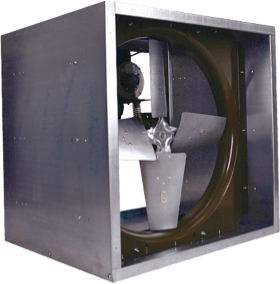
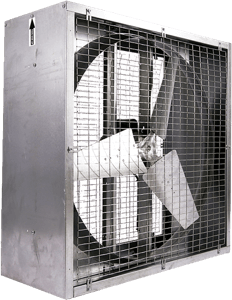
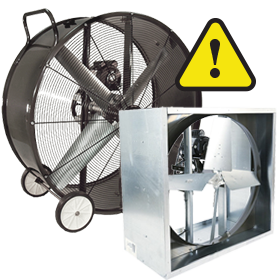
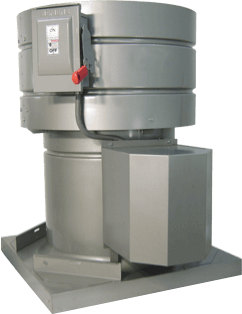
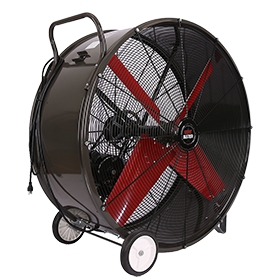
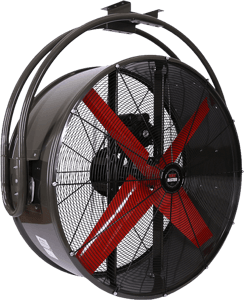
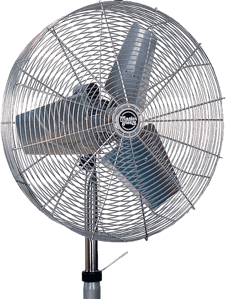
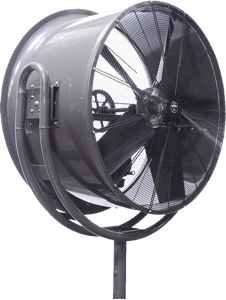
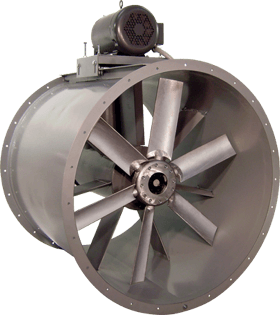
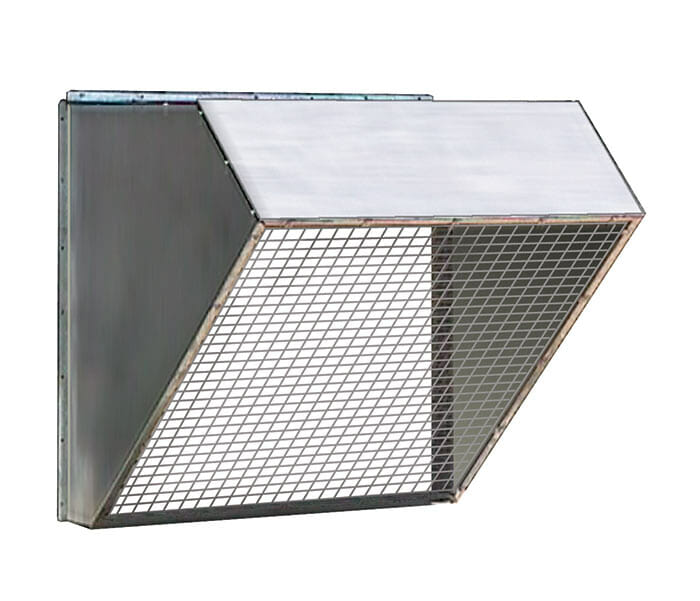
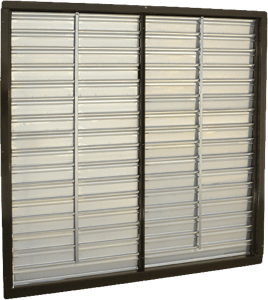

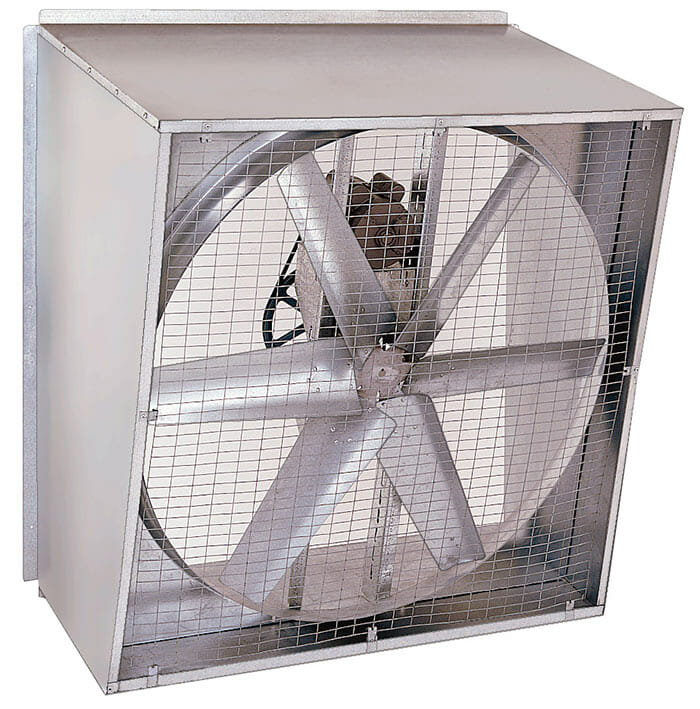
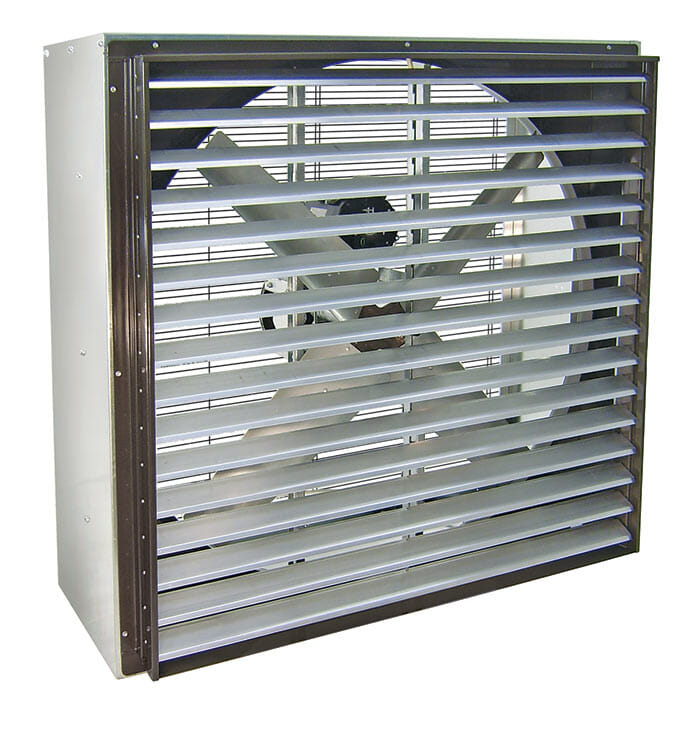
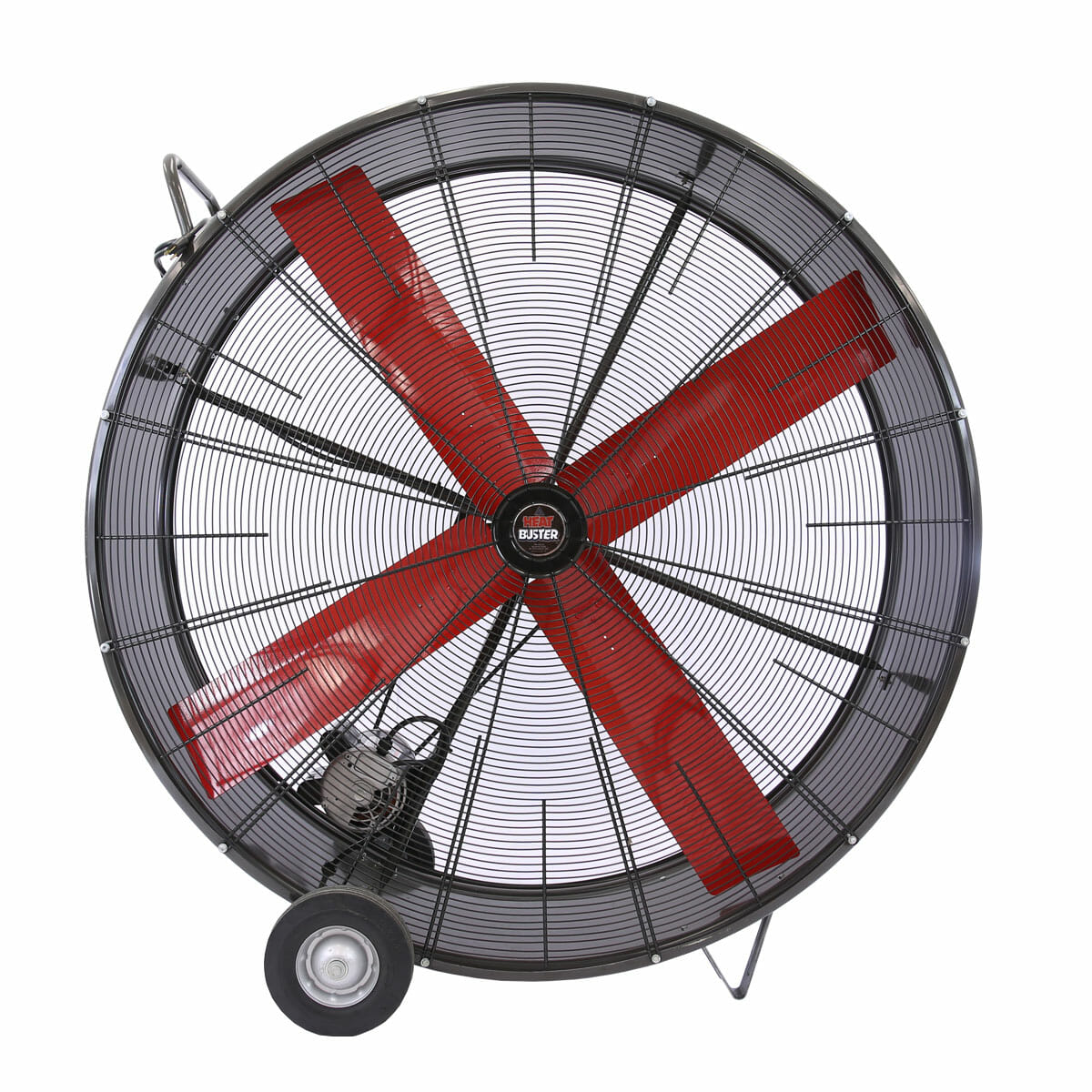
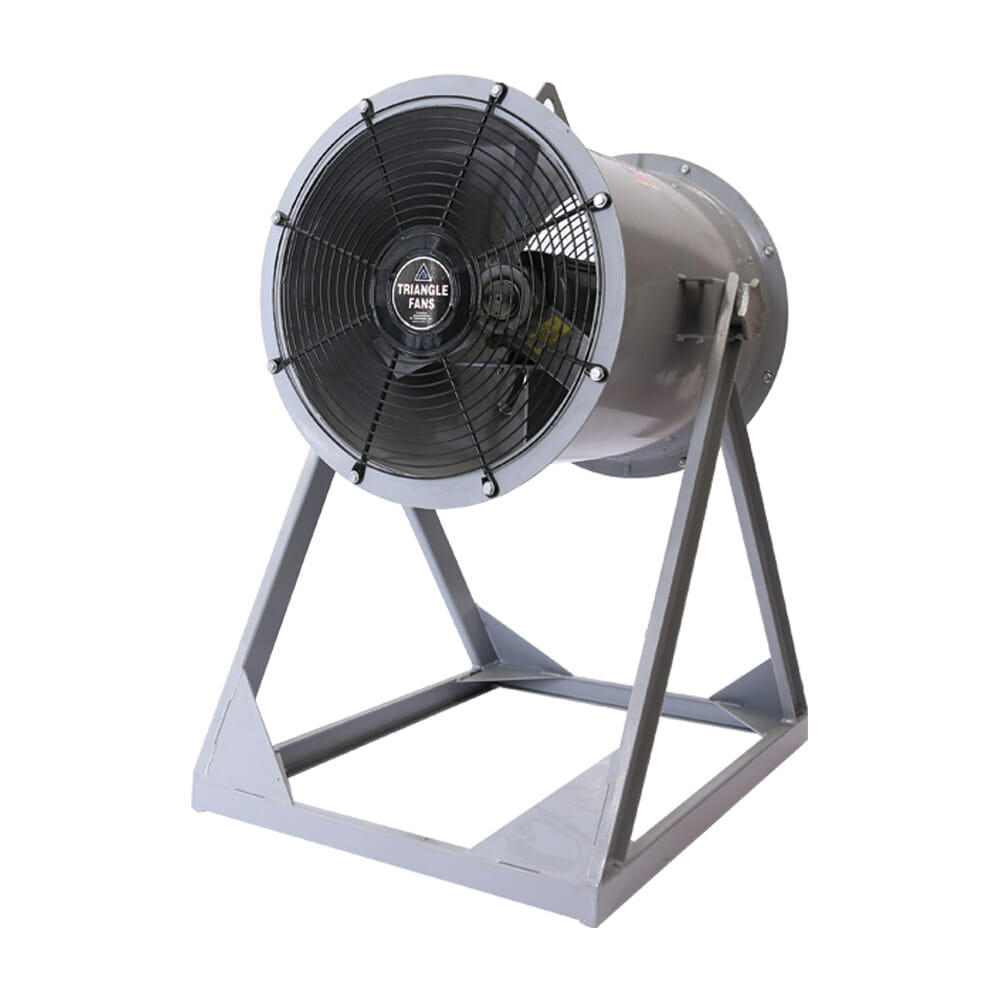
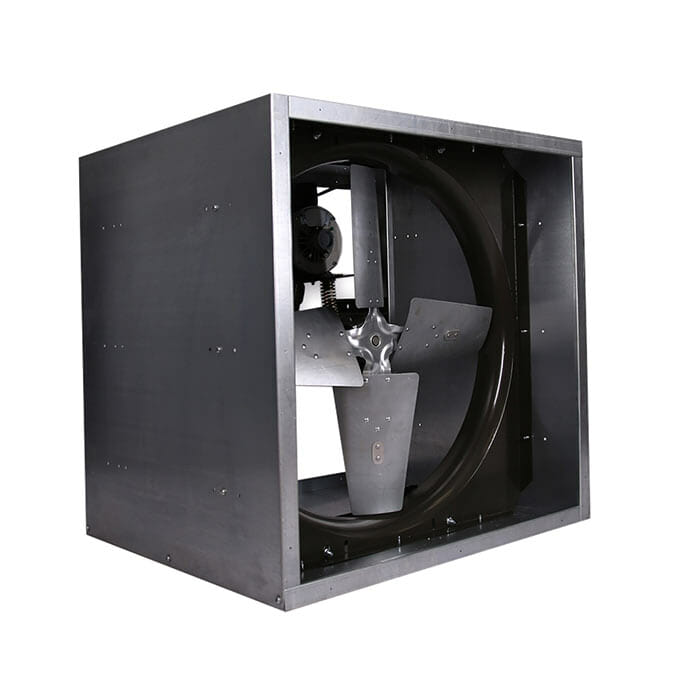
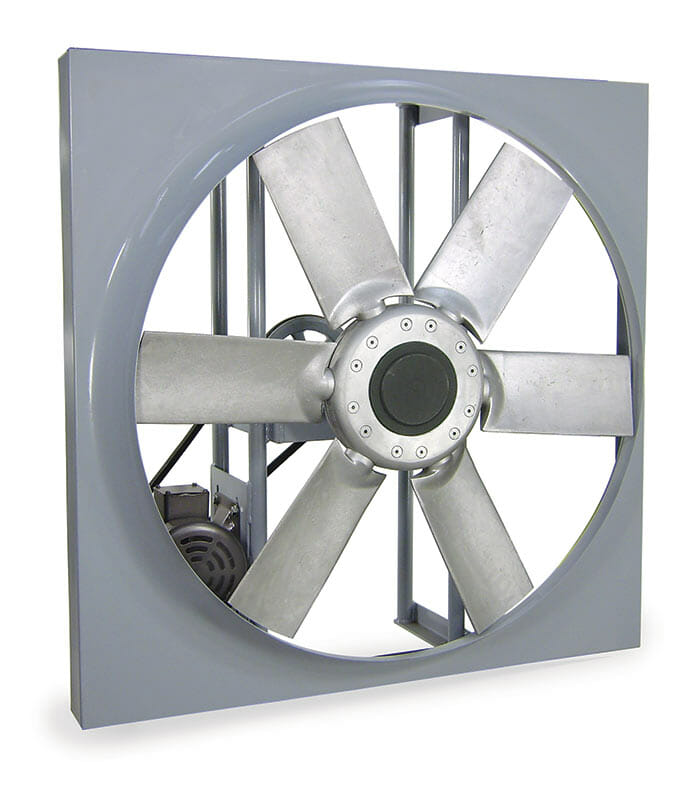
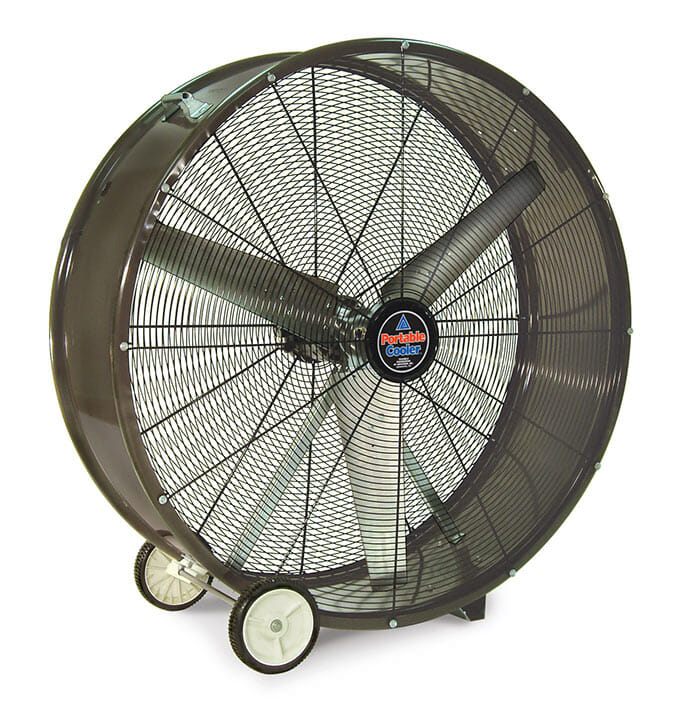
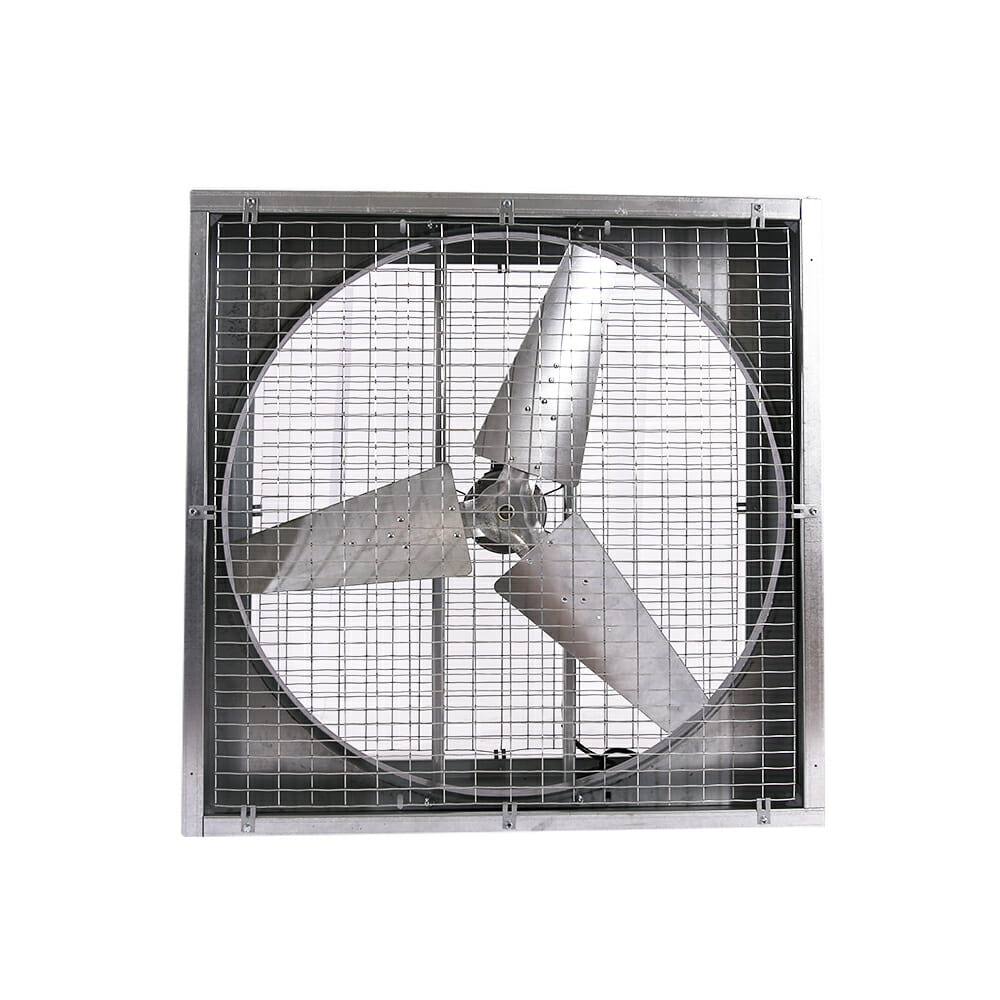

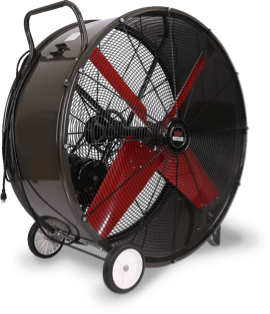
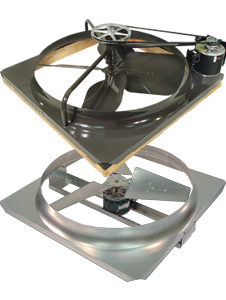
 Fan Size Calculator
Fan Size Calculator





